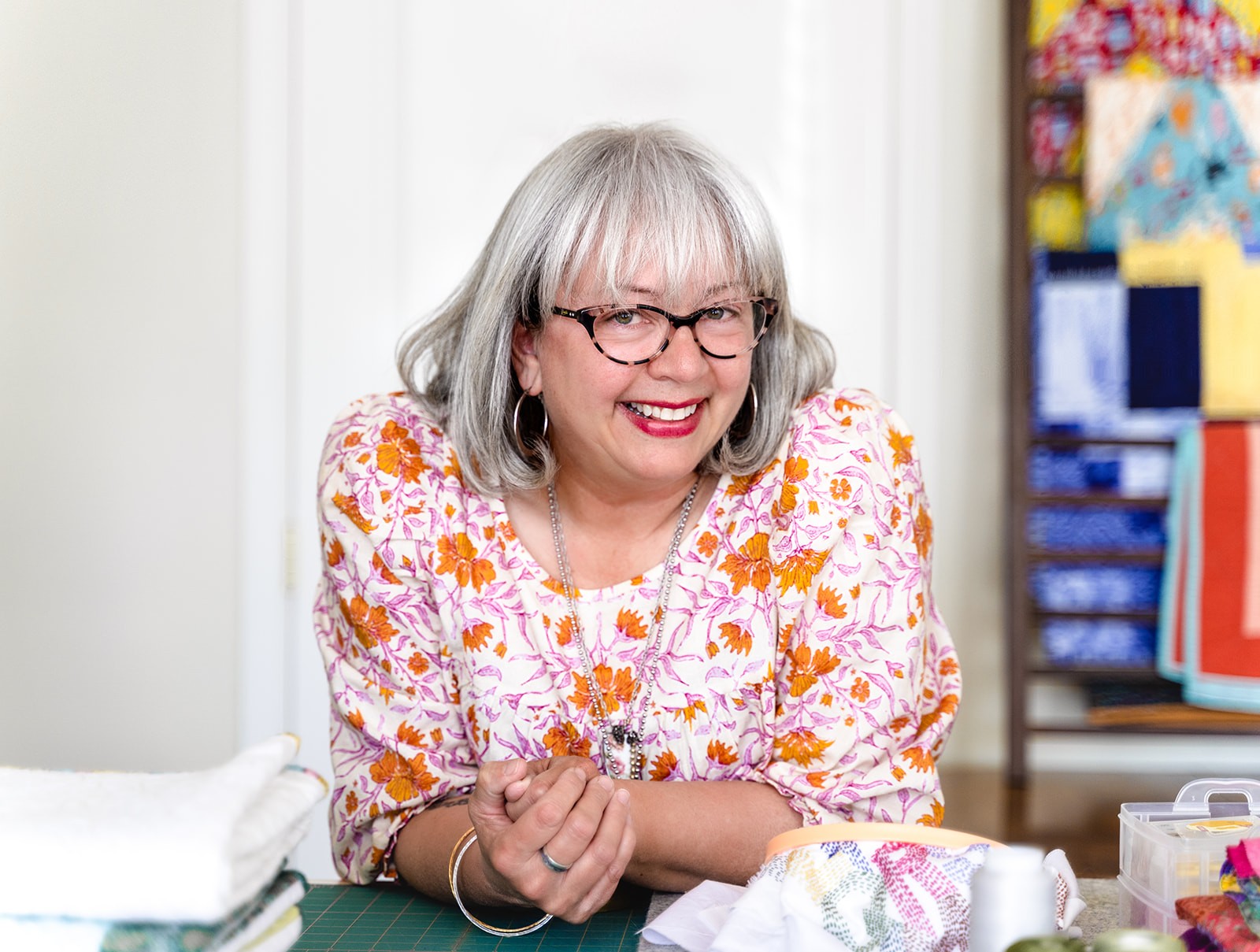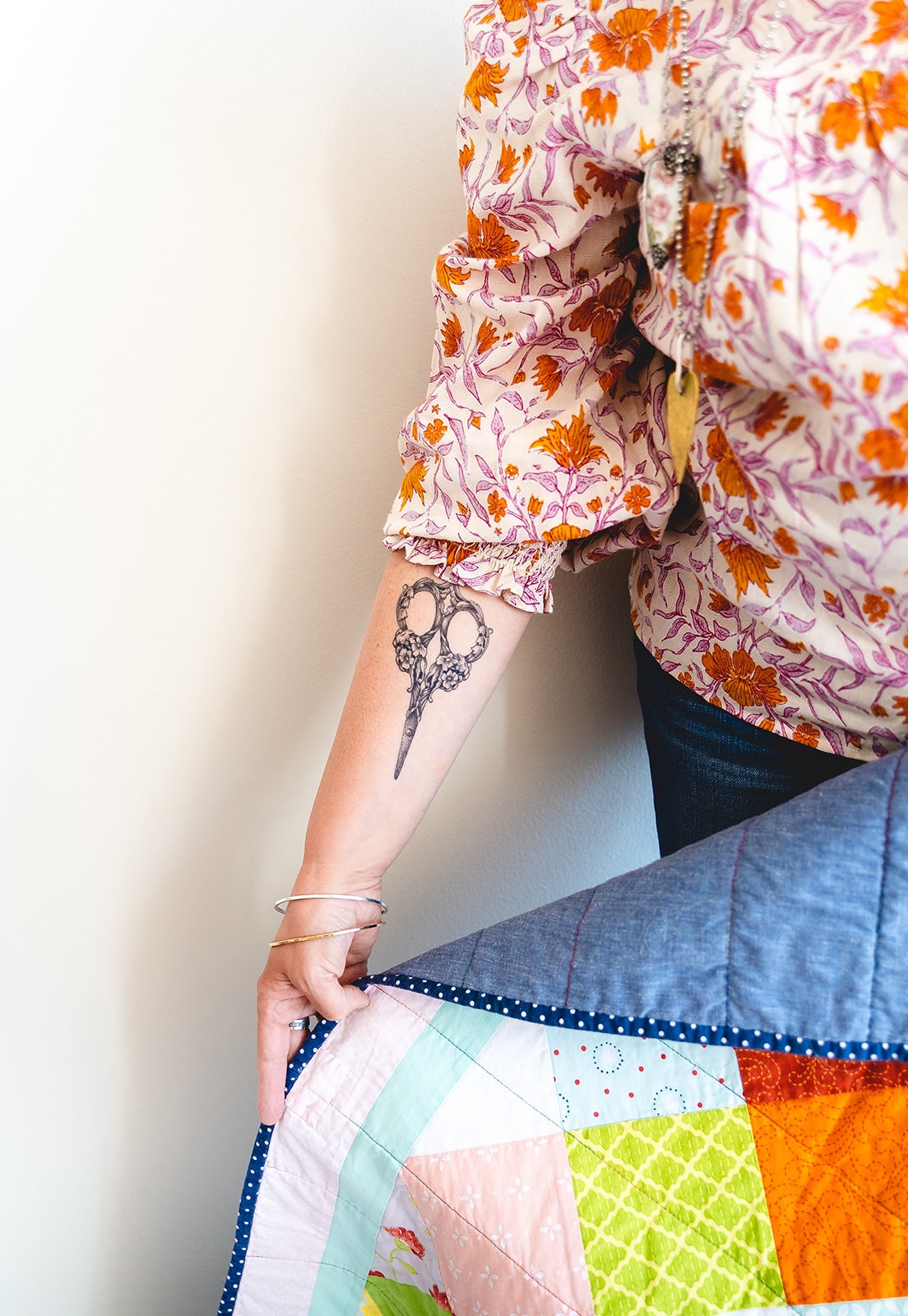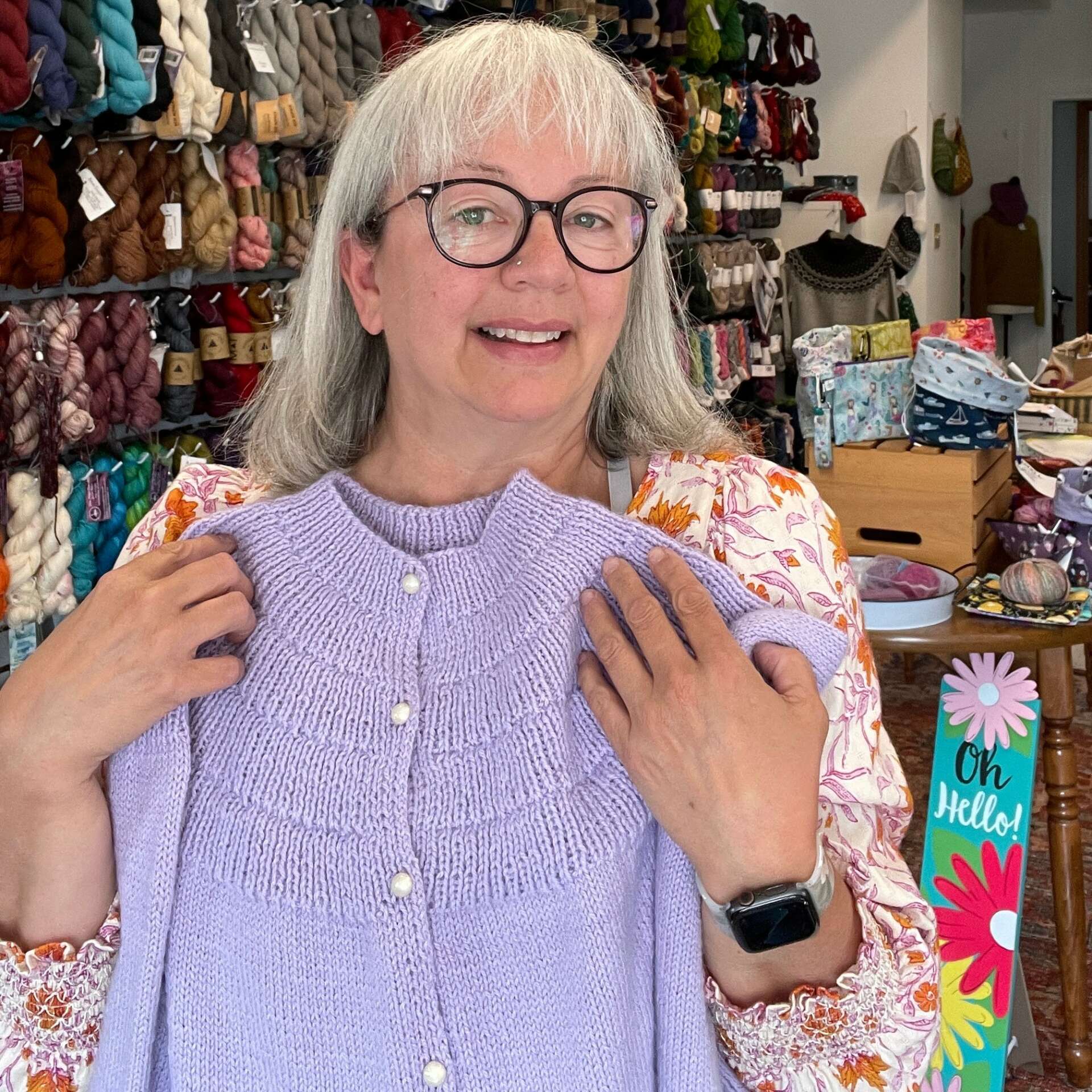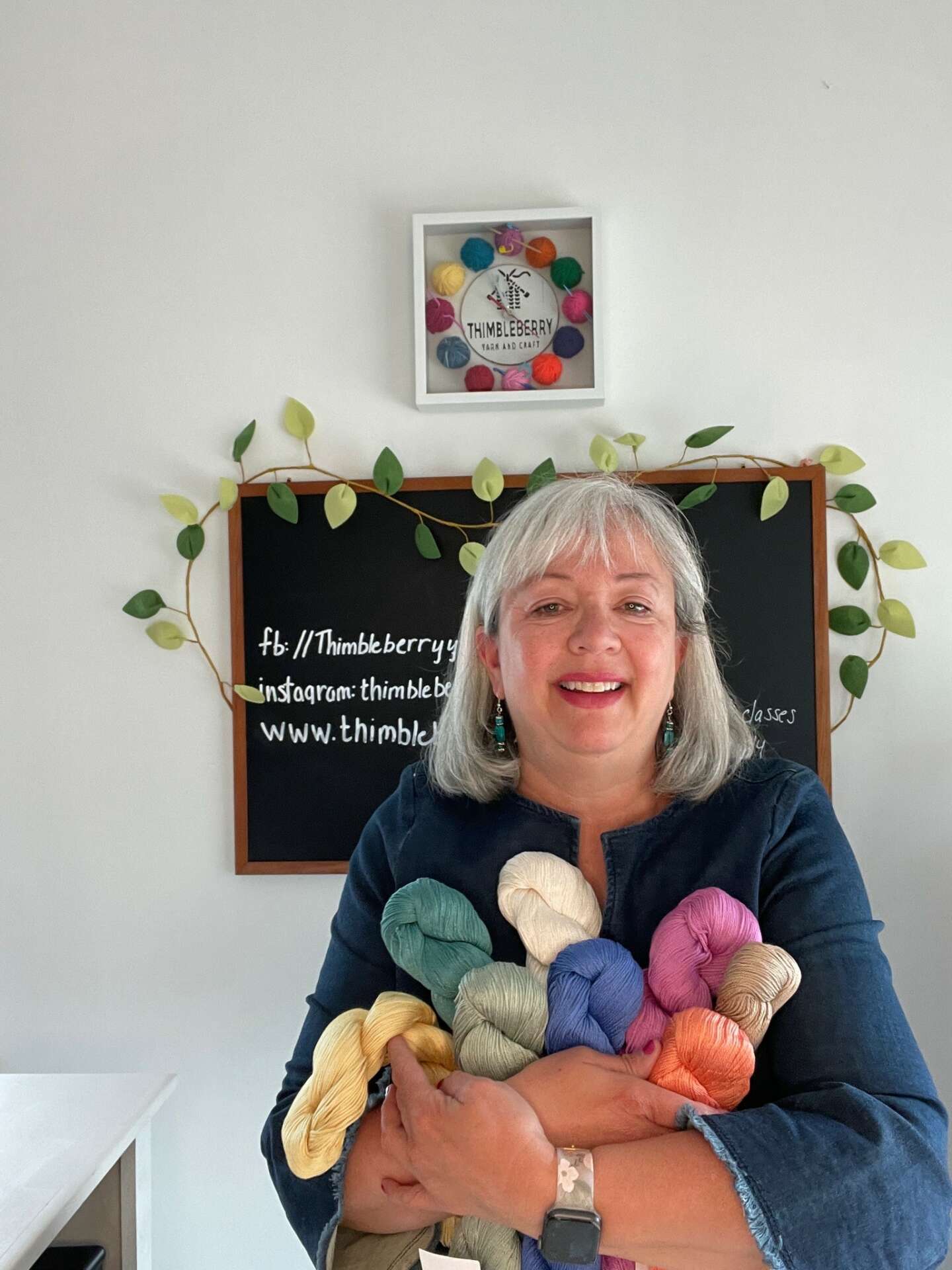We recently connected with Lisa Stuart and have shared our conversation below.
Lisa, appreciate you joining us today. Let’s start on the operational side – do you spend more of your time/focus/energy on growing revenue or cutting costs?
Thimbleberry is a bootstrapped, two and a half year old business. When I started out, every decision was grounded by limited resources so keeping costs low came first. I have been a fiber crafter for decades and I knew that growing revenue early on would come from two markets: local customers and destination shoppers. I had to find a way to reach both at minimum expense. The local customer I could find by spending time over money. I visited knitting guilds and fiber clubs and social groups that met to knit and crochet. The areas is geographically small and knitters and crocheters are a close knit group. I made connections with crafters that could be my introduction to the group and gained invites to the sessions. I brought business cards and coupons for a purchase. I still visit these groups when I can and most exciting, I host gatherings at my shop on occasion and these groups have cross pollinated and now attend each others events.
I reached out to destination shoppers through social media and Google. I always ask new customers where they are from and and how they found me as a part of my greeting. I am pleasantly surprised to find that even after two years, “Google, yarn near me,” is the consistent answer. Google has been a successful conduit and at a minimal investment.
Now that I have a stable local customer base I am focusing more on reaching out beyond the local area and that takes more investment in advertising. I am also investing more in new, higher end product to expand my reach and appeal.
I am finding that my focus is shifting from keeping cost down to investing in growth as my foundation gets stronger. I still take time every month to review my expenses and ask myself, “do I need to spend this money and what is the return?”


As always, we appreciate you sharing your insights and we’ve got a few more questions for you, but before we get to all of that can you take a minute to introduce yourself and give our readers some of your back background and context?
I learned to knit when I was ten years old and I have knitted with varying intensity for the past fifty years. Knitting is the constant through changes in my professional life and my family life. I always knew that I wanted to own a yarn store and I was always searching for the opportunity to leap into entrepreneurship. I have a degree in mechanical engineering from Penn State and I worked both in a nuclear power plant and for Ford Motor Company before I dedicated myself to a full-on career with The Boeing Company working as an engineer, engineering manager and program manager.
Throughout my paycheck jobs, I taught knit classes at my local guild and then at larger conferences where I was paid to teach the craft. I took classes as well, learning from well known designers and knitters. I enrolled in courses to build business acumen and learned about organizational design and entrepreneurship. I knew that if I was one day going to own a yarn shop, I would need to know the craft of knitting and have a deep understanding of the materials used, yarns. I also knew that if I wanted to be successful, I would need to know how to run a small business. I love fiber art, I knit, crochet, and I quilt, I was confident in all of those skills, but I need to strengthen my business acumen and running a small business is a unique skill.
When I retired from The Boeing Company, I jumped at an opening in a local storefront. I spent time in the empty shop and watched who went by. I interviewed passerby and sent surveys out to local neighborhoods. I needed to understand what the community would support. I didn’t want to fall into the pitfall of selling what I would buy rather than what my customers would buy.
I also looked to see what my competitors were doing. I have two shops near me and one is an hour away and one is 35 minutes away. The shop an hour away is much larger than my shop. The other shop is small like mine and has more upscale fibers than mine. I was focused on differentiation. COVID was the catalyst for the opening I saw: socialization.
The customers I spoke to were anxious to meet with their local groups again. They wanted to stitch with friends and like minded crafters. It was spring of 2022 and people were still wary of gatherings and my shop was small. There is local library in my town and they had just completed an adjoining outdoor park with seating, tables, umbrellas, and it was open to the public free of charge. I planned my first event: outdoor stitching in the park. I initially had doubts but 12 people came and spent the morning together, went to lunch and then visited my shop. I planned these monthly until the weather turned. Once it got too cold I held the events in the classroom space I have in the store. I serve coffee, cold drinks, and serve pastries. I charge just to cover my expenses. People get to shop before the store is open to the public and I tell them about new products, upcoming events, and give them this information ahead of the general public.
I have also started biannual daylong retreats. The first was in my shop and I sold out without advertising or even publishing it on social media. The event planned for July is off-site and I can accommodate more attendees. The event is a relaxing day spent at a ‘third place.’ I bring in a catered breakfast and lunch, offer discounts on specials kits, and even had hand massages for those that wanted them.
Building a crafting community has become a solid focus for me. I believe that having venue for a social connection to other crafters sets me apart. I have developed a loyal following of customers that frequent my store, attend events, and genuinely enjoy being together and I love that. I love creating the events, providing the product and services and being an active part of my community.


Are there any books, videos or other content that you feel have meaningfully impacted your thinking?
Yes! “Business Model Generation: A Handbook for Visionaries, Game Changers, and Challengers” by Alexander Osterwalder and Yves Pigneur. This was my go-to handbook when I set a strategy for my business before opening and I have used it continually as I have grown. The book drives home the fact that in order to compete you need a strategy and you need to constantly evaluate and evolve. In an earlier question I mentioned that I needed to focus on selling what my target customer wants to buy or experience. This book helped me to understand who my customer is, what my revenue streams are, and how to develop a core value proposition. There is more detail and the text goes deeper but it is clearly written, and the visual interface and examples make it easy to use. I set a Business Model Canvas for Thimbleberry when I started and I have been using the model modifying it and making business decisions based on it ever since.
My background and training is in engineering, not fiber arts, and not business. I liked the straight forward, logical presentation of this book and it helps me to put my ideas to paper and create a viable business that reflects my vision.
I also need to tell you that I benefitted tremendously from mentorship. I was a loyal customer of a knit shop about two hours from where I live now. I had been following Kathy, and her shop for decades and we stayed in touch when I left the area. When I decided to start my shop I went straight to Kathy for advice and guidance and she was generous and very helpful. I have to say, “Find a mentor and be a mentor.”
Can you talk to us about how your funded your business?
My business came together with the intent to bootstrap; I did not want to borrow money from friends or family and I didn’t want to take out loans. I also wanted to be certain that I could cover my expenses for the first year. I saved for several years to get about $10K in seed money. That would have to pay my expenses: rent, utilities, internet, and a point of sales system were monthly expenses and I had to pay for signage, furniture, and display hardware. After all that, I needed to fill the store with product to sell as a source of revenue. I also teach knitting and that was another revenue stream.
I knew my monthly expenses and could plan for them, I needed to be resourceful in accessing items like slat wall, shelving, and other items. I was able to get them second hand through Facebook Market Place and through word of mouth. I even picked up furniture at yard sales. This shop was set up as a boot strap, I knew I wouldn’t have new but I created a uniform esthetic by painting everything white. I like the eclectic look.
The hardest part was filling 450 square foot shop with enough yarn to bring in customers that may be interested in my classes as well. Many wholesalers had minimums that would take too much of my seed money. I wanted variety and I would be limited to one or maybe two brand names.
I got creative here as well. I knew through the surveys I used to develop my business plan that potential customers valued locally sourced yarns. I knew that there was an independent yarn mill about an hour away and they sold whole sale with a much smaller initial buy than the national brands. in addition, I had a good friend and fellow knitter who I had known for almost 20 years. She had started a business hand dying yarns. She sold at shows and fairs and offered to give me stock on commission. That meant I could fill my shelves without spending any money. My margin was lower, but it was a wonderful solution; it diversified my stock and was made locally by a woman owned business. This was a win win for both of us too as Jenn didn’t have the expense of packing her yarn in a trailer, towing it to an event and paying to stay overnight. I also had a dear friend who helped me with an angel investment and that allowed me to make my first wholesale purchase.
Now two and a half years later, my position has changed quite a bit. For the first year and a half, all of my profits were reinvested into the business. I saved for national wholesale buys, I bought needles, crochet hooks, and tools. I developed a following of local shoppers and I started to attract destination shoppers and vacationers. I reached a point where the 450 square feet was limiting. There was a storefront across the street that was available and three times the space. I had built up to where I reached a limit on the amount of product that I could carry and earnings were profit or restock funds. If I stayed my profits were limited by space, I couldn’t teach large classes and I could only carry yarn that could fit on the walls.
I did the calculations and based on the increased cost of rent and potential increase of revenue decided to take the chance. Moving to a larger space I could earn more per square foot and increase my profits. It was a calculated risk.
I have been in my new space for 8 months now and I have been very happy with the results. I worked very hard to create a welcoming space on the shop floor, I have a comfortable space to hold classes and hold events where I can feature new products and demonstrate techniques. It has been a very rewarding stretch. It was scary, but rewarding. My decision was based my understanding that I needed to be nimble and open to change. I set a strategy and I followed the plan while always evaluating and being ready to make a shift and adapt.
Contact Info:
- Website: www.thimbleberryyarn.com
- Instagram: thimbleberry_makes
- Facebook: thimbleberry yarn and craft
- Linkedin: Lisa Stuart
Image Credits
Lisa Stuart and Laura Grace Sears


